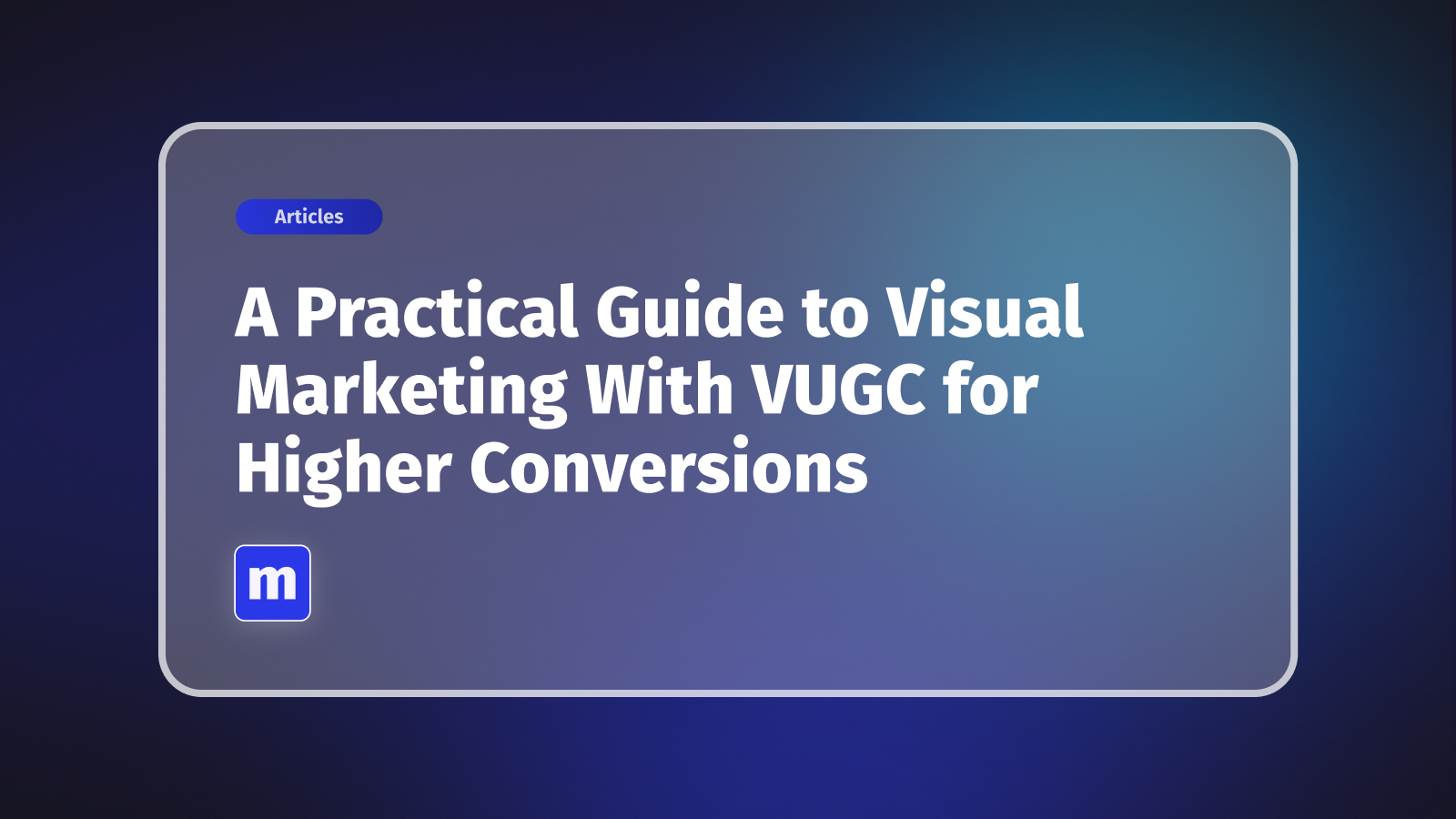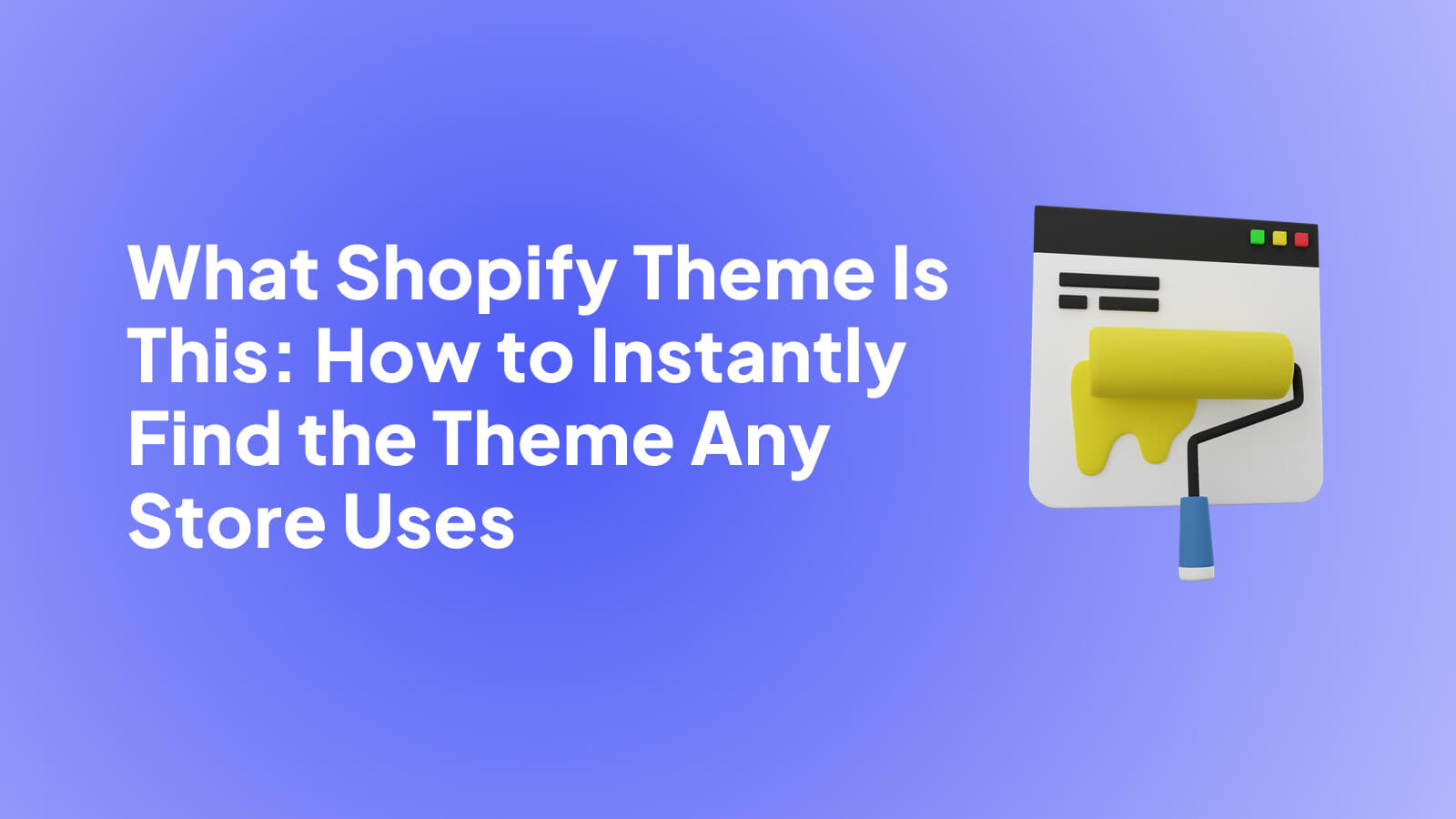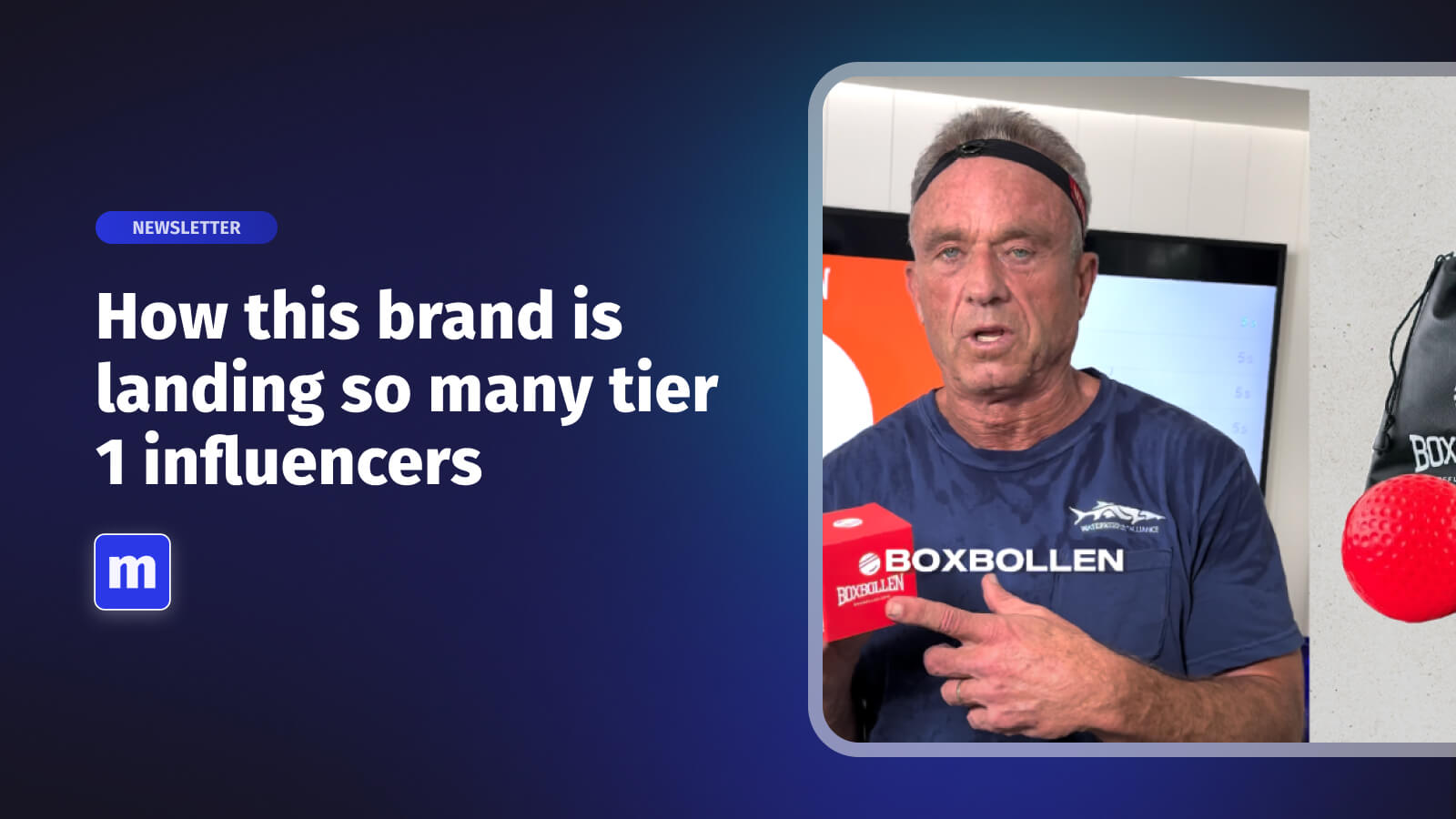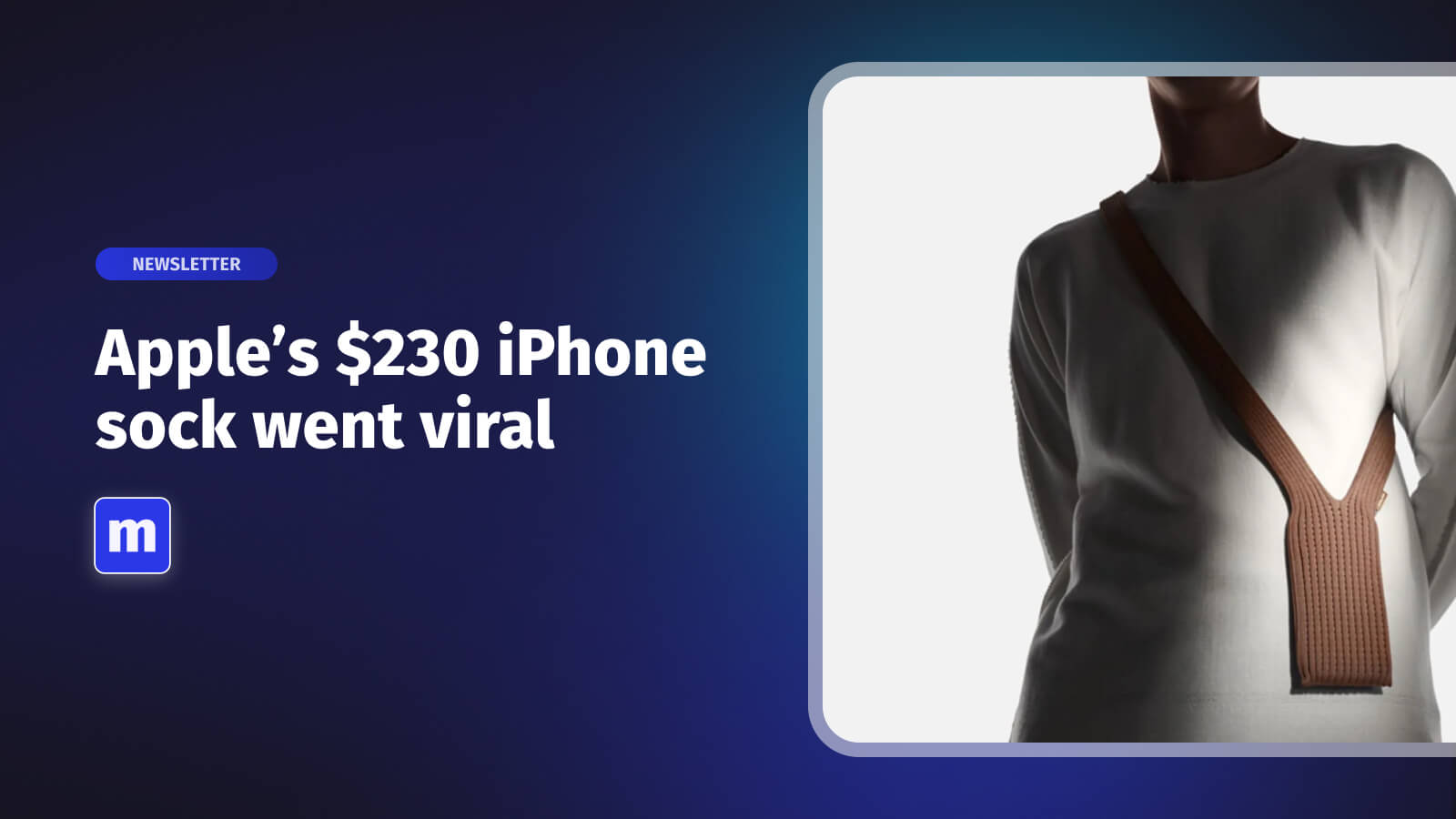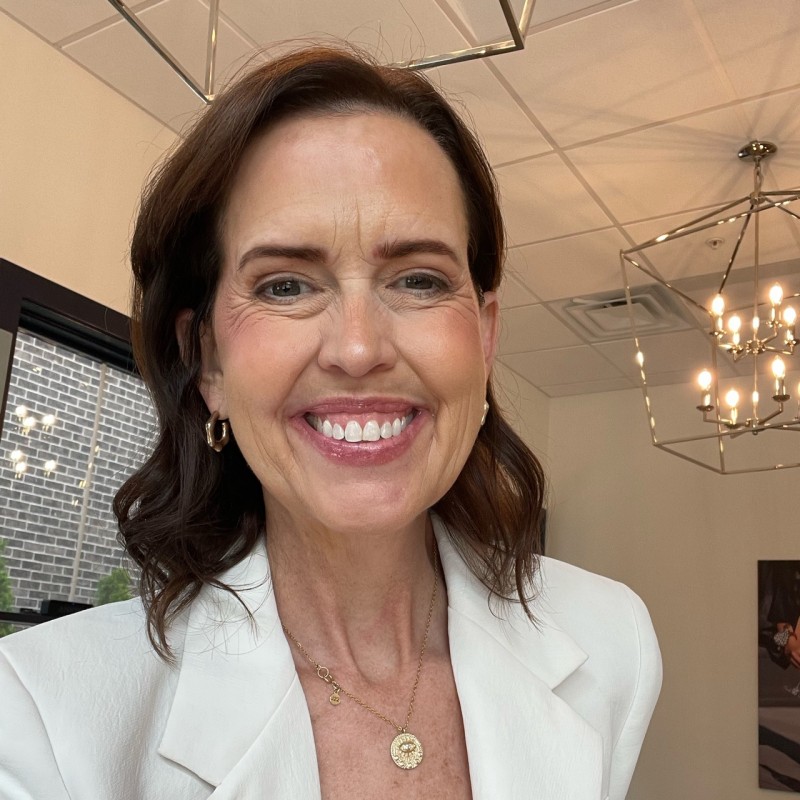
- Why Your Small Business Can't Ignore Video Marketing Anymore
- Crafting a Video Strategy That Fits Your Business Reality
- Creating Professional Videos on a Shoestring Budget
- Mastering Short-Form Content That Converts
- Strategic Distribution That Maximizes Your Video's Impact
- Tracking ROI and Metrics That Actually Drive Growth
- Your Video Marketing Implementation Roadmap
Why Your E-Commerce BusinessCan't Ignore Video Marketing Anymore
It's easy to see video marketing for small businesses as just another item on a never-ending to-do list. You're already busy with inventory, customers, and just keeping the lights on. But video isn't just a "nice-to-have" for big brands with huge budgets anymore. It's now a core part of how customers find, trust, and ultimately buy from businesses just like yours. The way people consume information has changed, and video is leading the charge.
Put yourself in your customers' shoes for a moment. Would you rather read a dense block of text describing a product or watch a quick 30-second clip of it being used? The choice is pretty clear. Video gives you a direct, personal, and compelling way to connect that text and static photos just can't replicate. It's your opportunity to build a real relationship, let your brand's personality shine, and show off what makes your products great in a format people love to watch and share.
The Real-World Impact Beyond Views and Likes
The power of video extends far beyond surface-level metrics like views and likes. For an e-commerce shop, a well-made product video can have a direct impact on your conversion rates. It helps bridge the online shopping gap by showing a product's true size, texture, and how it works in real life, giving customers the confidence they need to click "buy."
Likewise, a behind-the-scenes tour or a "meet the founder" video creates a human touch that builds incredible loyalty. People want to buy from businesses they feel a personal connection with. Video is the best tool available to forge that bond, helping you turn one-time shoppers into loyal customers and enthusiastic brand advocates. These are the tangible results that truly make a difference for a small business.
Overcoming the Common Hurdles
So, what’s stopping you? Many small business owners feel stuck, worrying about tight budgets, not having enough time, or feeling like they need to be a tech expert. These are completely valid concerns, but they’re often rooted in old ideas about video production. You don’t need a Hollywood-style film crew. In fact, some of the most powerful videos are shot on a smartphone, where authenticity wins over a polished, corporate feel.
The numbers back this up. In 2025, a massive 89% of companies are using video in their marketing efforts, and 95% of those marketers agree it's a critical piece of their overall strategy. Still, 37% admit they don't know where to begin, which is a common feeling for many entrepreneurs. You can see the full statistics on this widespread adoption to understand just how essential video has become.
The trick is to start small and aim for impact. To get a broader view of how video fits into your digital presence, checking out an ultimate guide to social media growth strategies for small businesses can offer some foundational knowledge. Sitting on the sidelines isn't a safe bet anymore; it's actively costing you customers and sales. The hard truth is your competitors are probably already using video, and every day you wait is another day they are connecting with people who could be your customers.
Crafting a Video Strategy That Fits Your Business Reality

A solid plan for video marketing for small businesses doesn't begin with a camera; it starts with a clear purpose. It’s easy to get excited about creating flashy content, but without a strategy tied to your specific business reality, your efforts can feel random and ineffective. The objective isn't just to make videos—it's to create videos that actually work, driving real results like sales, new leads, and stronger customer relationships.
This means shifting your focus from what looks impressive to what genuinely moves the needle. For an e-commerce brand, this might be a video designed to lower cart abandonment rates or one that clearly answers the top three questions your customer service team fields every day. The most successful small businesses map out their customer’s journey and identify the exact moments where a video can remove a barrier, build trust, or simply create a moment of delight. Think about where your customers get stuck, feel uncertain, or need an extra push. Those are your golden opportunities for impactful video.
Aligning Video Content with Business Goals
Every single video you produce needs to have a job to do. Are you trying to build brand awareness, bring in leads, or drive direct sales? Your answer will shape the type of video you make. A heartfelt founder story is perfect for building awareness and trust, while a detailed product demonstration is built to turn a viewer into a buyer. Defining this purpose upfront stops you from wasting time and money on content that doesn't help your bottom line.
A simple framework can connect your ideas to concrete objectives. For instance, if your goal is to reduce returns for a complex product, a series of "how-to-use" or "common mistakes to avoid" videos would be a smart move. If you're launching a new product line, a teaser campaign followed by a full "unboxing and first impressions" video can build excitement and drive those crucial initial sales. For a deeper dive into creating content specifically for online stores, our guide on e-commerce video production offers more detailed insights. This focused approach makes sure your video marketing is always intentional and results-driven.
To help you match video formats to your goals, here's a quick comparison of common video types and what you can expect from them.

Here are some of the ways you can use AI:
As you can see, simpler videos like testimonials can be produced quickly to build long-term trust, while more involved educational content can take longer to pay off but establishes you as an expert.
Creating a Sustainable Content Calendar
One of the biggest challenges for small businesses is consistency. A flurry of activity followed by months of radio silence won't build any momentum. A sustainable content calendar is the key to delivering a steady stream of valuable content without burning out your team. Start by brainstorming video ideas that connect to your goals, then map them out for the next quarter. Remember, this doesn't mean you need a new video every single day. Quality will always beat quantity.
Try creating your content in batches. You could set aside one day a month to film several short videos, like customer testimonials or quick tips. This is much more efficient than setting up all your gear for a single shoot. Also, consider creating "pillar" content—a larger, more in-depth video that can be chopped up into smaller clips for social media, emails, and your website. For example, a 10-minute video detailing your manufacturing process can be sliced into five or six short, engaging clips. This approach squeezes the most value out of each production day and keeps your content pipeline flowing.
Creating Professional Videos on a Shoestring Budget
The biggest myth in video marketing is that you need a Hollywood-level budget to produce something great. The truth? Some of the most compelling and effective video content is born from creativity and authenticity, not expensive equipment. Viewers, especially those engaging with small businesses, often value a genuine connection over a slick, corporate-style production. It’s about being real, not just looking expensive.
This means you can absolutely create professional-looking videos without draining your bank account. It all comes down to being strategic with your resources and focusing on what truly matters: clear audio, good lighting, and a compelling message. The good news is that the smartphone in your pocket is already an incredibly powerful camera, often capable of shooting in high-definition 4K. That's your starting point, and it’s more than enough to get going.
Smart Investments: What You Actually Need
While your smartphone is the star of the show, a few small, affordable investments can dramatically elevate the quality of your videos. Think of these as force multipliers—small additions that create a big impact.
Here’s what to prioritize:
- A Solid Tripod: Shaky footage is one of the quickest ways to look unprofessional. A simple, sturdy tripod for your phone is an inexpensive purchase that provides immediate stability and polish.
- An External Microphone: Viewers will forgive slightly imperfect video quality, but they won't tolerate poor audio. A clip-on (lavalier) microphone that plugs directly into your phone can be purchased for under $50 and will make your sound crystal clear.
- Basic Lighting: You don't need a complex three-point lighting setup. A simple ring light can provide soft, flattering light that eliminates harsh shadows and makes you or your products look fantastic. Natural light from a window is also a powerful (and free) tool if you know how to use it.
By focusing on these three core areas—stability, sound, and light—you address the most common production mistakes that make videos feel amateurish. To ensure your video marketing efforts are sustainable, understanding and managing your overall marketing budget is crucial. For deeper insights, consider reading about optimizing your small business marketing budget to make every dollar count.
The Rise of AI in Video Creation
The world of video production is changing fast, and new technologies are making it easier than ever for small businesses to create high-quality content. The integration of artificial intelligence into video tools is a perfect example of this shift. AI-powered software can help with everything from scripting and editing to generating captions and even creating entire videos from text prompts.
This technology is a huge advantage for small teams. The use of AI in video production has surged, jumping from just 18% in 2023 to a remarkable 41% in 2024. These tools lower the barrier to entry, helping you produce more content faster, without needing years of technical experience. You can find more details about these trends by exploring the latest video marketing statistics.
Here are some of the ways you can use AI:

DIY vs. Professional Production: When to Choose Which
With these tools at your disposal, the do-it-yourself approach is often the best path for many types of video content. Authenticity is your superpower as a small business, and DIY videos excel at conveying that.
- Go DIY for: Social media stories, behind-the-scenes content, quick product demos, and customer testimonials. These formats thrive on a raw, unpolished feel that builds trust and community. To get started, you can check out our guide on how to create product videos that convert.
- Consider a Pro for: A flagship brand story video for your homepage or a high-stakes investor pitch. For these cornerstone assets where the highest level of polish is non-negotiable, hiring a professional can be a worthwhile investment.
Ultimately, your approach to video marketing for your small business should be a mix. Use scrappy, budget-friendly tactics for the majority of your content to stay consistent and authentic, while saving your bigger budget for those rare, high-impact projects.
Mastering Short-Form Content That Converts

The rise of platforms like TikTok, Instagram Reels, and YouTube Shorts has completely changed the game for video marketing for small businesses. This isn't just another passing trend; it's a real shift in how we all watch and engage with content online. For a small e-commerce shop, this is a golden opportunity. You don't need a Hollywood budget or a lengthy production schedule to make an impact anymore. Now, you can compete using creativity, quick thinking, and a genuine connection with your audience.
The magic of short-form video is all about psychology. Our brains are tuned to process information in quick bursts, and these bite-sized videos give us an instant dose of entertainment or knowledge. This format forces you to cut through the fluff and get straight to the good stuff, which is precisely what a customer scrolling through their feed is looking for. Your main challenge is to deliver a powerful message in the first three seconds—that’s the make-or-break moment when you either hook them or they swipe away.
The Art of the Instant Hook
That initial three-second window is everything. If you don't nail the hook, the rest of your video might as well not exist. A great hook does more than just get someone's attention; it creates a "curiosity gap" that the viewer feels a sudden urge to close. Instead of a bland opening like, "Check out our new product," try something that piques interest immediately.
Imagine a small coffee shop starting a video with the text, “You’re making your morning coffee all wrong,” before revealing a clever brewing technique. This works because it challenges a daily routine and promises a better way. Here are a few hook formulas that consistently work:
- Ask a provocative question: "Is your skincare routine actually damaging your skin?"
- Make a bold, unexpected statement: "Why we want you to use less of our product."
- Show a surprising or satisfying result first: Start with the "after" shot of a powerful cleaning product at work.
- Use a trending sound: A popular audio clip can make people stop and watch just out of familiarity.
Why Shorter Is Smarter
It's no secret that attention spans are getting shorter, and the data on video length backs this up. The average duration of a marketing video plummeted from 168 seconds in 2016 to just 76 seconds in 2023. Some forecasts even predict it could drop to 39 seconds by 2026. This trend sends a clear message: people prefer content that is quick and easy to digest. You can find more details by looking into these insightful video marketing statistics.
This shift demands that your video marketing for small businesses is as efficient as possible. For an e-commerce store on a platform like Shopify, this could look like:
- Product Spotlights: 15-second videos that showcase one amazing feature.
- Styling Tips: 20-second clips demonstrating how to style an item of clothing in three unique ways.
- Packing Orders: 30-second time-lapses offering a satisfying behind-the-scenes glimpse of your process.
Creating a Content Series for Repeat Viewers
A one-off viral video is exciting, but a lasting strategy is built on encouraging viewers to return. A content series is an excellent way to achieve this. By establishing a recurring format, you teach your audience what to expect and when, which helps build a loyal community around your brand.
For instance, a business that sells kitchen gadgets could create a weekly series called "Gadget Test Tuesday." Each week, they could test one of their products on a strange or challenging food item. It’s a simple, repeatable, and entertaining concept. If you want to explore building out your own strategy, you might find our guide on video marketing for small business helpful. The goal is to land on a theme that feels authentic to your brand while providing a nearly endless stream of content ideas.
Strategic Distribution That Maximizes Your Video's Impact
Creating a fantastic video is a huge accomplishment, but your job isn't over once the editing is done. The most amazing video in the world won't drive a single sale if no one sees it. This is where strategic distribution comes in—it’s the crucial process of getting your content in front of the right people, on the right platforms, at the right time.
A common mistake in video marketing for small businesses is the "spray and pray" approach: posting the same video everywhere and just hoping for the best. This not only wastes time but also dilutes your impact. A smarter approach is to be selective and intentional. Instead of trying to be on every platform, focus your efforts on the one or two places where your ideal customers actually hang out.
If you sell trendy fashion accessories to a younger audience, platforms like TikTok and Instagram Reels are probably your best bet. If you offer B2B consulting services, LinkedIn and YouTube might be more effective. Being selective allows you to dedicate your energy to creating content that truly connects with the specific culture of that platform, rather than spreading yourself too thin.
Choosing Your Platforms Wisely
Before you even think about posting, ask yourself a few key questions: Where does my audience hang out online? What kind of content do they engage with there? What is my goal for this specific video? Your answers will guide your distribution choices.
For instance, a detailed, educational "how-to" video is perfect for your website’s blog and YouTube, where users are actively searching for solutions. A quick, engaging product highlight, on the other hand, is built for the fast-paced, discovery-driven environment of Instagram Reels. The key is to match the content format to the platform's context and user expectations.
To help you decide where to focus your energy, let's look at how different platforms typically perform for small businesses. This table breaks down what you can expect in terms of reach, engagement, and the best content to post.
Platform Performance Comparison for Small Businesses
Analysis of reach, engagement, and conversion rates across major video platforms for small business content

As you can see, there's no single "best" platform. High-reach platforms like TikTok might not be the best fit for every brand, while the direct traffic to your website offers a highly engaged, albeit smaller, audience. Your choice should align with your specific campaign goals.
Amplifying Your Reach Organically
You don’t need a massive ad budget to get eyes on your videos. Smart organic tactics can significantly boost your reach. One of the most effective strategies is content repurposing. That 5-minute product demonstration you filmed can be trimmed into multiple powerful assets:
- A 30-second highlight reel for Instagram.
- A 1-minute detailed clip for your Facebook page.
- A series of 15-second tip videos for TikTok.
- High-quality stills from the video to use as social media graphics.
This method maximizes the value of every minute you spend filming. Additionally, think about community engagement. Don't just post your video and walk away. Actively participate in relevant Facebook groups, forums, or subreddits where your target audience congregates. Share your video when it genuinely adds value to a conversation, not as a blatant advertisement. This builds authority and drives qualified traffic.
When considering which types of videos drive the most direct action, it's worth exploring the differences between shoppable videos vs. traditional product videos to see how interactive elements can boost conversions. By being thoughtful and community-focused, your distribution efforts will build momentum and deliver real business results.
Tracking ROI and Metrics That Actually Drive Growth

It’s tempting to get caught up in the thrill of seeing your video's view count and likes shoot up. These "vanity metrics" are great for a quick ego boost, but they don't exactly pay the bills. The true purpose of video marketing for small businesses is to deliver real results—think more leads, increased sales, and a healthier bottom line. To achieve this, you have to look past the surface-level numbers and track the metrics that connect your video content to actual business growth.
This means shifting your focus from how many people watched your video to what actions they took afterward. Did they click through to your product page? Did they sign up for your email list? Did they actually buy something? Answering these questions reveals the true return on your investment (ROI). This proven impact is why video is such a game-changer. By 2025, an incredible 93% of marketers agree that video provides a positive ROI, and 84% say it has directly helped increase sales. As a small business owner, every dollar counts, and numbers like these are too compelling to overlook. You can discover more about these impressive video marketing statistics to get the full story.
Identifying Your Key Performance Indicators (KPIs)
The metrics you should track are completely tied to your video's goal. You wouldn't judge a fish on its ability to climb a tree, right? So, don't measure a brand awareness video by direct sales. It’s all about aligning your Key Performance Indicators (KPIs) with the specific job of each video.
.png)
Setting Up a Simple Tracking System
You don’t need a massive analytics team to figure out what’s working. A great starting point is using unique UTM parameters for the links in your video descriptions or on-screen calls-to-action. This simple trick lets you trace website traffic and conversions back to a specific video using tools like Google Analytics. For instance, a link from a YouTube video about a new product might look like this: yourstore.com/product?utm_source=youtube&utm_medium=video&utm_campaign=new-product-launch.
This setup gives you a clear feedback loop. If you see a particular video is driving tons of quality traffic and sales, you know you've struck gold and should create more content like it. If another video gets plenty of views but no one clicks, it’s a good sign that your call-to-action needs some work. Going beyond simple tracking, you can learn how to truly improve your overall marketing ROI to better allocate your budget across all your efforts. This data-first approach turns your video marketing from a shot in the dark into a reliable engine for business growth.
Your Video Marketing Implementation Roadmap
It’s time to shift from planning to doing. A great strategy is one thing, but consistently putting it into action is where many small businesses get bogged down. This isn't about creating a mile-long to-do list that feels impossible. Think of this as a practical 90-day plan designed to build momentum, secure some early wins, and make video a sustainable part of your e-commerce growth.
The whole point is to progress strategically. Don't try to become a video expert overnight. Focus on getting the basics right first, and then build on what you learn.
Your First 30 Days: Building the Foundation
This first month is all about getting your systems in place and just getting comfortable in front of the camera. The goal here isn't perfection; it's about being consistent.
- Week 1: Gear and Setup. Get your essential, budget-friendly equipment. You don't need a Hollywood studio. A simple tripod for your phone, an inexpensive lavalier microphone, and a ring light will make a huge difference. Find a small, well-lit corner in your office or shop and make that your dedicated filming spot.
- Weeks 2-4: Create and Publish. Your only mission is to create one short-form video each week. Seriously, just one. Don't overthink it. You could film a simple product feature, answer a question you always get from customers, or share a quick behind-the-scenes look at your business. Just the act of creating and posting consistently is the main victory here.
Days 31-60: Ramping Up and Refining
Now that you have a month of practice, you can start to polish your approach and increase your video output without feeling overwhelmed.
- Content Batching: This is a game-changer for efficiency. Set aside one day to film four videos that will cover the entire month. It's so much easier than setting up your gear and getting in the right headspace every single week.
- Performance Review: Take a look at the videos you made in your first month. Did one get more comments or shares than the others? That’s your clue. Double down on that style of video or topic for your next batch. Use this early data to inform your creations.
Days 61-90: Optimizing for Growth
At this point, you have a small library of videos and some real data on what works. It’s time to start thinking about what’s actually driving results for your business.
The infographic below outlines a simple, three-part process for measuring your video marketing success, moving from basic views to real business impact.

This flow shows that while views are a good start, the real story is in the engagement and, most importantly, the conversions that affect your bottom line. Use this framework to analyze your videos from the past 60 days. Pinpoint which content didn't just get views but actually encouraged people to take action. This insight will be your guide for the next quarter's video strategy.
Ready to showcase these fantastic videos directly on your Shopify store? With Moast, you can add beautiful, shoppable video galleries in just minutes. It’s 100% free with unlimited views. Get started with Moast today!
Related content
Turn your social content into a revenue channel
Turn your TikToks and Reels into shoppable videos and boost conversions by 3.5x.

